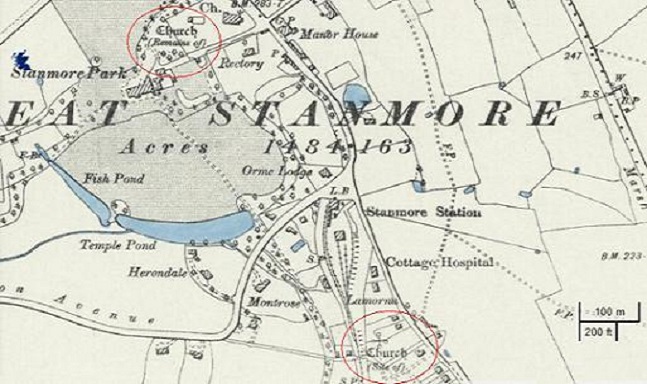An old Ordnance Survey map showing the site of St. Marys church along Old Church Lane and the ruin of St. Johns Church Great Stanmore.
We could all be forgiven for thinking that 'Old Church Lane' which runs through Great Stanmore is named after the red brick ruined church of St. John which stands adjacent to the end of the lane as it intersects with the Uxbridge Road. In fact the 'Old Church' predates the ruined one by hundreds of years and was built in the 14th century.
This medieval Church was built on the site of an old wooden Saxon church. This Saxon church consecrated in 1094 was in turn built on the site of a Roman compitum shrine. A compitum shrine was a place which served as a centre of public worship and public meeting. It would most probably have been adapted to Christian worship sometime after the restoration of religious freedom in 313.
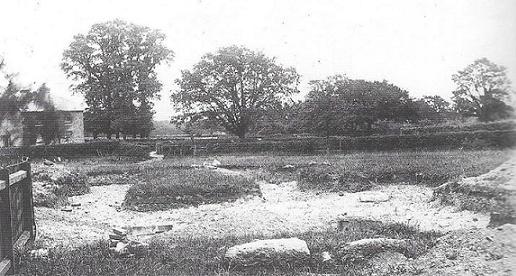
The Medieval church was built in the fourteenth century and dedicated to St. Mary but was also known as the 'Church of our Lady'. It was erected some way to the south of the present St. John the Evangelist Church, which would in those times have been near the centre of the village, sitting on the left bank of the Stanburn stream outside of the moat surrounding the Stanmore manor house.
These days that would be the junction of Church Lane and Wolverton Road. It was a small building which was originally constructed with an aisle-less nave, about thirty-four feet long, and the west gable, was supported by a pair of diagonal buttresses. There was also evidence that considerable alterations seem to have taken place in the fifteenth century. The nave was lengthened to forty-five feet by moving the west wall with its buttresses nearer the stream. It is thought that the church had been re-buttressed at the west end due to the proximity of the Stanburn stream which now ran close by the end of the building. A new chancel was built, the same width as the nave, thus virtually making the church one large hall seventy-four feet long and twenty-two feet wide.
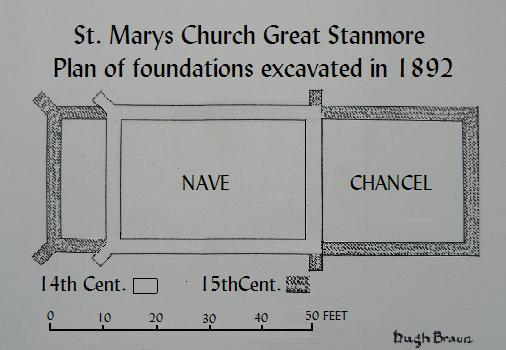
The discovery of the medieval church was a bit of an accident really as although St Mary‘s church was used until 1632, worship was then transferred to the St. Johns (now ruined red brick) church further up the road. The site left overgrown and derelict for hundreds of years was eventually lost in the sands of time. Then by a stroke of luck a team of workmen came across the foundations in 1889, when an accommodation road was being dug to go under the proposed Stanmore to Harrow railway line. From these discoveries, contemporary historian and archaeologist Hugh Braun was able to construct a floor plan of the medieval church.
There is no record of what happened to the many graves that must had been uncovered during the railway building work, except for one, the tombstone of Revd. Baptist Willoughby. Baptist Willoughby was rector of St.Mary’s, he was nominated and remained in office for forty-seven years from 1563 to 1610. This grave still exists to this day and it is situated in the garden of Haslemere, no. 44 Old Church Lane. It is inscribed, To the memory of "Baptist Willoughby, Gent. 50 years’ incumbent of the parish," who died in 1610, aged 72. After the death of Mr. Willoughby he was succeeded by the Rev. John Boyle and later the Rev. Henry Rainsford.
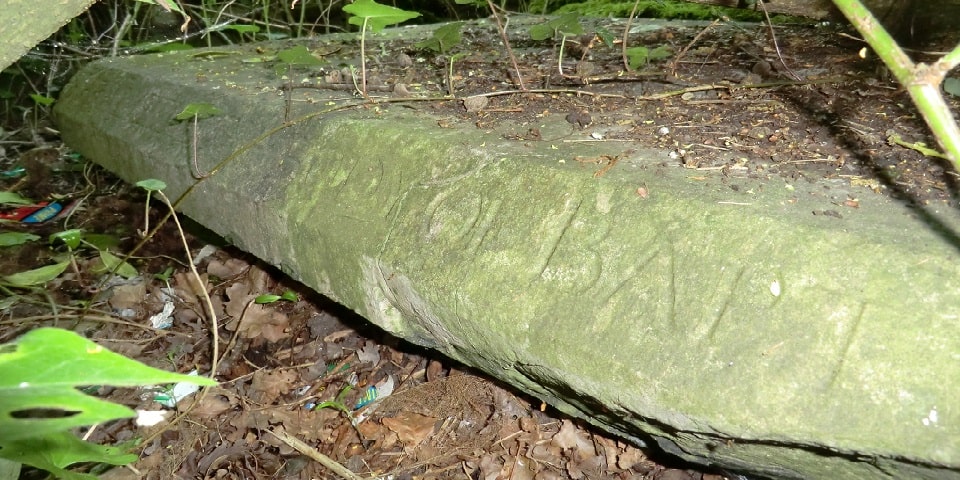
These days little else exists from these old historic buildings except for one monument from inside the medieval church which has survived and can be seen on the north wall in the present church of St. John the evangelist, which incidentally had also spent over 200 years hanging in the other St. John church which is now the ruin. The monument was not moved from St Mary’s until 1637 indicating that the church was not immediately demolished on the opening of the brick church in 1632.
This wonderful old monument commemorates John Burnell “merchant of London and Freeman of the worshipful Company of Clothworkers” who leased the manor of Great Stanmore from 1599 and his wife Barbara, who continued as lady of the manor after his death in 1605.
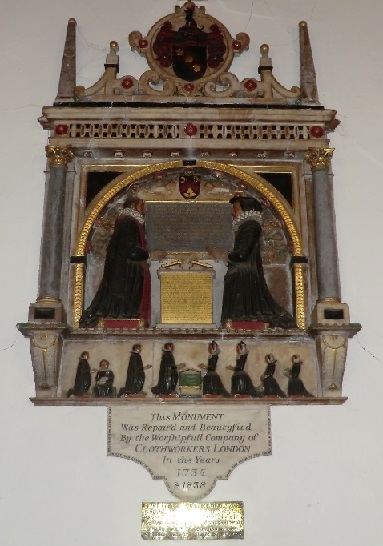
Both John and Barbara Burnell are shown kneeling on either side of a 'prie dieu'. They are pictured with their eight children beneath them, also kneeling at prayer. The second youngest boy is staring into space with a skull perched on his lap, he was thought to have an intellectual disability. The youngest girl has a skull in her hands while the next sister has skull on the ground beside her, these three children all died young and are said to be the symbols of mortality.
Barbara Burnell left two shillings per year to the parish clerk to keep the monument “clean without dust” when she died in 1632, a sum which the parish clerk was still receiving in 1933. Over the years the monument has been restored by the clothworkers company on several occasions.
